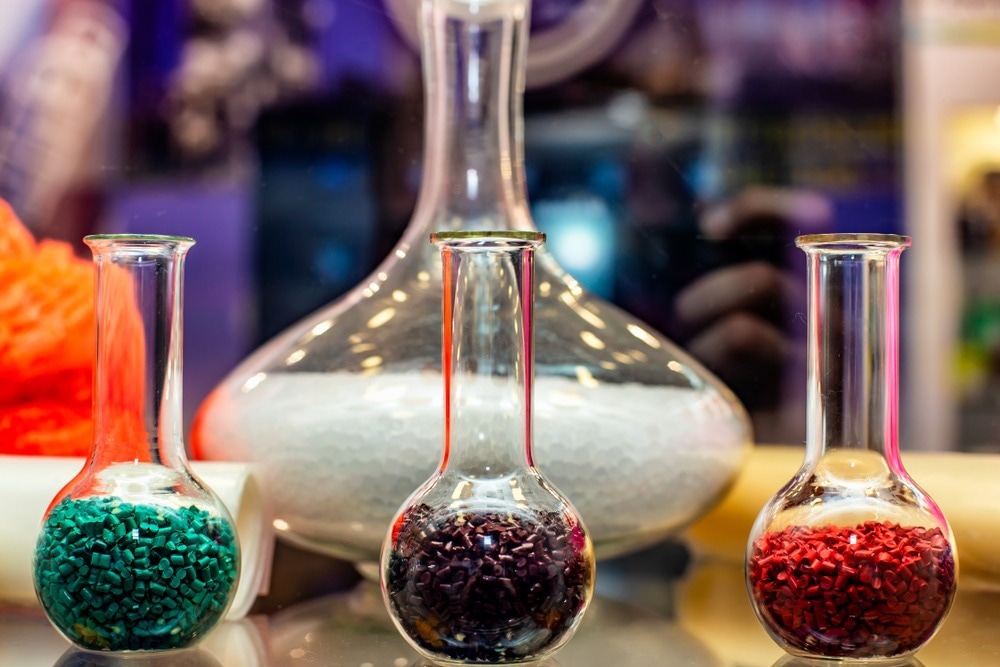In an upcoming study from ACS Catalysis, researchers developed a series of novel phosphonium borane catalysts and investigated them using Raman spectroscopy in the context of CO2/epoxide copolymerizations. This research offers new insights into the borane/phosphonium cooperativity. It leads to developing low-cost, non-toxic, and highly active tertiary phosphonium catalysts that can produce sustainable polyalkylene carbonates, a low-carbon plastic.

Study: Tertiary and Quaternary Phosphonium Borane Bifunctional Catalysts for CO2/Epoxide Copolymerization: A Mechanistic Investigation Using In Situ Raman Spectroscopy. Image Credit: IU Liquid and water photo/Shutterstock.com
Copolymerization and Polyalkylene Carbonates
Copolymerization is the formation of polymers from two or more monomeric units. The copolymerization of carbon dioxide and epoxides provides an interesting potential for converting CO2 waste streams into polyalkylene carbonates.
Polyalkylene carbonates are unique, eco-friendly polymers that require significantly fewer petrochemicals than traditional plastics. Carbon dioxide contributes to roughly 50% of the raw material feedstock, dramatically reducing petrochemical use.
This technique can enable the sequestration of greenhouse gases in the form of carbon dioxide.
Role of Catalysts in Copolymerization
Polyalkylene carbonates are produced in the presence of appropriate catalysts. In this context, metal-based catalysts, including Cr, Zn, and Al systems, have been widely explored.
Organoboranes
Organoboranes have gained substantial research and emerged as effective catalysts in several polymerization processes due to their low cost and non-toxicity. For example, onium salts and the Et3B binary catalyst can enhance CO2/epoxide copolymerization.
Phosphonium Borane
In the past, binary catalyst systems based on metal have used phosphonium salts. This is because phosphonium cations can react with anions through their open σ*(P‑R) orbitals due to their Lewis acidity.
There are more positively charged H atoms on β-and α-carbons and more dispersive-type interactions due to the higher phosphorus radius than nitrogen. In addition, due to the charge delocalization, Hβ and Hα are superior H-bond donors compared to their ammonium equivalents.
These distinctive properties of phosphonium cations may be utilized to stabilize crucial transition states and intermediates in the catalytic cycle of CO2/epoxide copolymerization.
Significance of Using Raman Spectroscopy in Bifunctional Catalysis
Raman is a light-scattering-based method in which the substrate concentrations and signal response are linearly correlated. This concept monitors the complete reaction profile and determines the substrates' concentrations at any given time.
Raman spectroscopy is extremely sensitive to structural disturbances in molecules. In addition, its rapid data gathering time makes this spectroscopic approach ideal for conducting high-quality in-reactor kinetic investigations.
Using Phosphonium Borane Catalysts for CO2/Epoxide Copolymerization
For the CO2/epoxide copolymerization, quaternary and tertiary phosphonium borane was selected as catalysts. Catalyst structures were altered carefully to acquire insight into the complicated structure-activity interaction.
The copolymerization processes were observed by Raman spectroscopy, allowing the calculation of polymerization rate constants and enabling a quantitative and thorough comparison of various catalysts.
Researchers created a nonisothermal kinetic approach that allowed direct mapping of the polymerization rate constant (kp) as a function of polymerization temperature to analyze the catalysts effectively. This technique also extracted activation enthalpy, entropy, and the ideal temperature for polymerization in a single continuous experiment.
Epoxides were copolymerized with CO2 using phosphonium borane catalysts to create polyalkylene carbonate with a chemo-selectivity greater than 95%.
From the perspective of developing an industrially applicable homogeneous solution polymerization method, the following qualities were targeted:
- High thermally stability
- Molecular weight and chain end control
- Fast polymerization rate
Important Findings of the Study
The results of the isothermal kinetic runs at 80 °C indicated that:
- For all catalysts, the depletion of CHO follows first-order kinetics.
- The tether length and the substituents on borane and phosphonium significantly impact the first-order rate constant.
- The bulkier borane analog is the fastest catalyst at 80 °C.
The nonisothermal kinetic method enabled direct curve fitting of entropy and activation enthalpy to the Eyring equation and the estimation of optimal polymerization temperature.
In-depth examinations show complex relationships between Lewis acidity, entropy, and activation enthalpy concerning structural changes. These findings align with the mechanistic hypothesis where the carbonate species is the resting state, and the epoxide ring-opening is the rate-determining step.
DFT calculations reveal that the noncovalent stabilizations generated by the phosphonium moieties are crucial. This research identifies tertiary phosphonium borane analogs with an acidic phosphonium proton as the most effective catalysts based on polymerization rate constant and optimal polymerization temperature.
This research highlights the bifunctional catalysis between a Lewis acid and a noninnocent cation, which can be extended to organic or metal-based systems.
Reference
Jonathan Schaefer, Hua Zhou, Eryn Lee, Nikola S. Lambic, Gursu Culcu, Matthew W. Holtcamp, Francis C. Rix, and Tzu-Pin Lin. (2022) Tertiary and Quaternary Phosphonium Borane Bifunctional Catalysts for CO2/Epoxide Copolymerization: A Mechanistic Investigation Using In Situ Raman Spectroscopy. ACS Catalysis. https://pubs.acs.org/doi/10.1021/acscatal.2c03843
Disclaimer: The views expressed here are those of the author expressed in their private capacity and do not necessarily represent the views of AZoM.com Limited T/A AZoNetwork the owner and operator of this website. This disclaimer forms part of the Terms and conditions of use of this website.